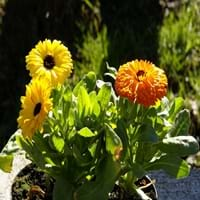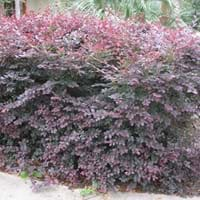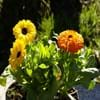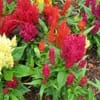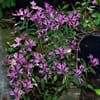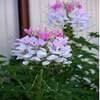Life Span
Perennial
Perennial
Type
Flowering Plants
Broadleaf Evergreen
Origin
Europe, Mediterranean
China, Japan
Types
Kablouna Gold, Fiesta Gitana, Art Shades
Little Rose Dawn, Hines Purpleleaf, ‘Shang-hi
Habitat
gardens, Roadsides, Waste areas, wastelands
gardens, Hillside, open Woodlands, Roadsides, Rocky areas, Stream side, Woodlands
USDA Hardiness Zone
3-9
6-9
AHS Heat Zone
6 - 1
Not Available
Sunset Zone
A2, A3, H1, 1a, 1b, 2a, 2b, 3a, 3b, 4, 5, 6, 7, 8, 9, 10, 11, 12, 13, 14, 15, 16, 17, 18, 19, 20, 21, 22, 23, 24
21,22
Habit
Clump-Forming
Oval or Rounded
Flower Color
Yellow, Orange, Bronze, Ivory
White
Flower Color Modifier
Bicolor
Bicolor
Fruit Color
Green, Tan
Brown
Leaf Color in Spring
Green
Green, Bronze
Leaf Color in Summer
Green
Green
Leaf Color in Fall
Green
Green
Leaf Color in Winter
Light Green
Green
Leaf Shape
Oblong-lanceolate
Ovate
Plant Season
Early Autumn, Spring, Summer
Spring, Summer, Fall, Winter
Sunlight
Full Sun, Partial shade, Partial Sun
Full Sun, Partial Sun, Partial shade
Type of Soil
Well drained
Loam
The pH of Soil
Acidic, Alkaline, Neutral
Acidic, Neutral
Soil Drainage
Average
Average
Bloom Time
Early Winter
Early Spring, Late Winter
Tolerances
Drought
Drought
Where to Plant?
Ground, Pot
Container, Ground
How to Plant?
Seedlings, Transplanting
Seedlings, Transplanting
Plant Maintenance
Medium
Low
Watering Requirements
Requires regular watering
Do Not over Water
In Summer
Lots of watering
Lots of watering
In Spring
Moderate
Consistently
In Winter
Average Water
Ample Water
Soil pH
Acidic, Alkaline, Neutral
Acidic, Neutral
Soil Type
Moist, Well drained
Loam
Soil Drainage Capacity
Not Available
Average
Sun Exposure
Partial shade
Full Sun, Partial Sun, Partial shade
Pruning
Cut or pinch the stems, Remove damaged leaves, Remove dead branches, Remove dead leaves
Prune to control growth
Fertilizers
All-Purpose Liquid Fertilizer
All-Purpose Liquid Fertilizer, Fertilize three times a year
Pests and Diseases
Red blotch
Bacterial Gall
Plant Tolerance
Drought
Drought
Flower Petal Number
Double, Semi-Double
Single
Foliage Texture
Medium
Medium
Foliage Sheen
Matte
Matte
Attracts
Beetles, Butterflies, Flying insects
Not Available
Allergy
Dizziness, Itchiness, Nausea, Skin rash, Swelling
Not Available
Aesthetic Uses
Showy Purposes
Showy Purposes
Beauty Benefits
Good for skin and hair, Skin cleanser, Skin Problems, used as a dye
Not Available
Environmental Uses
Air purification
Not Available
Medicinal Uses
Curing mumps and measles, Cuts, Reduces toothache, Surgical wounds, Throat infection, Ulcers
No Medicinal Use
Part of Plant Used
Flowers, Leaves, Root
Whole plant
Other Uses
Cosmetics, Sometimes used for making wine, Used as an insecticide, Used as essential oil, Used As Food, Used as Ornamental plant, Used in salads
Used as Ornamental plant
Used As Indoor Plant
Insignificant
No
Used As Outdoor Plant
Yes
Yes
Garden Design
Groundcover, Showy Tree
Container, Feature Plant, Foundation, Hedges, Mixed Border, Screening, Wind Break
Botanical Name
CALENDULA officinalis
LOROPETALUM chinense
Common Name
Pot Marigold
Loropetalum, Chinese fringe flower
In Hindi
Pot Marigold
Loropetalum
In German
Ringelblume
Loropetalum
In French
pot Marigold
Loropetalum
In Spanish
Caléndula
Loropetalum
In Greek
καλέντουλα
Loropetalum
In Portuguese
pot Marigold
Loropetalum
In Polish
Pot Marigold
Loropetalum
In Latin
Zinnia Pot
Loropetalum
Phylum
Vascular plant
Spermatophyta
Class
Magnoliopsida
Dicotyledonae
Order
Asterales
Saxifragales
Family
Asteraceae
Hamamelidaceae
Genus
Calendula
Loropetalum
Clade
Angiosperms, Asterids, Eudicots
Angiosperms, Core eudicots, Eudicots
Tribe
Calenduleae
Not Available
Subfamily
Asteroideae
Not Available
Number of Species
Not Available
Properties of Pot Marigold and Loropetalum Chinese
Wondering what are the properties of Pot Marigold and Loropetalum Chinese? We provide you with everything About Pot Marigold and Loropetalum Chinese. Pot Marigold doesn't have thorns and Loropetalum Chinese doesn't have thorns. Also Pot Marigold does not have fragrant flowers. Pot Marigold has allergic reactions like Dizziness, Itchiness, Nausea, Skin rash and Swelling and Loropetalum Chinese has allergic reactions like Dizziness, Itchiness, Nausea, Skin rash and Swelling. Compare all the properties and characteristics of these two plants. Find out which of these plant can be used as indoor plant. If you are interested to decorate your house and garden, find out aesthetic uses, compare them and select the plant which will beautify your surrounding. Along with beautification, try comparing medicinal and edible uses of Pot Marigold and Loropetalum Chinese and you can choose the plant having best and most benefits.
Season and Care of Pot Marigold and Loropetalum Chinese
Season and care of Pot Marigold and Loropetalum Chinese is important to know. While considering everything about Pot Marigold and Loropetalum Chinese Care, growing season is an essential factor. Pot Marigold season is Early Autumn, Spring and Summer and Loropetalum Chinese season is Early Autumn, Spring and Summer. The type of soil for Pot Marigold is Well drained and for Loropetalum Chinese is Loam while the PH of soil for Pot Marigold is Acidic, Alkaline, Neutral and for Loropetalum Chinese is Acidic, Neutral.
Pot Marigold and Loropetalum Chinese Physical Information
Pot Marigold and Loropetalum Chinese physical information is very important for comparison. Pot Marigold height is 80.00 cm and width 91.44 cm whereas Loropetalum Chinese height is 180.00 cm and width 180.00 cm. The color specification of Pot Marigold and Loropetalum Chinese are as follows:
Pot Marigold flower color: Yellow, Orange, Bronze and Ivory
Pot Marigold leaf color: Green
Loropetalum Chinese flower color: White
- Loropetalum Chinese leaf color: Green and Bronze
Care of Pot Marigold and Loropetalum Chinese
Care of Pot Marigold and Loropetalum Chinese include pruning, fertilizers, watering etc. Pot Marigold pruning is done Cut or pinch the stems, Remove damaged leaves, Remove dead branches and Remove dead leaves and Loropetalum Chinese pruning is done Prune to control growth. In summer Pot Marigold needs Lots of watering and in winter, it needs Average Water. Whereas, in summer Loropetalum Chinese needs Lots of watering and in winter, it needs Ample Water.
